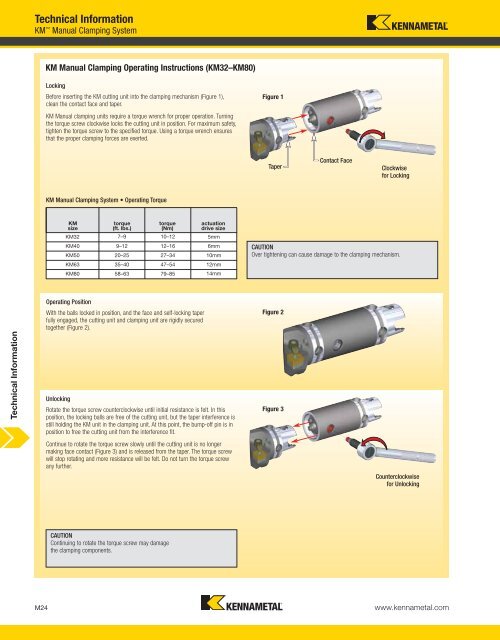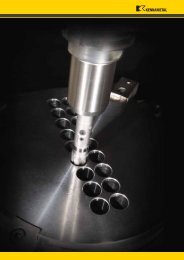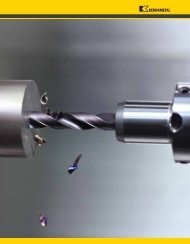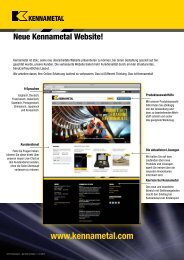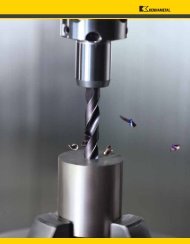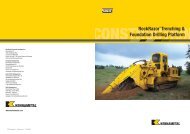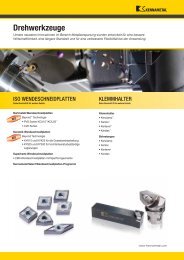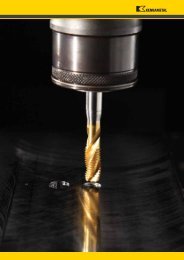You also want an ePaper? Increase the reach of your titles
YUMPU automatically turns print PDFs into web optimized ePapers that Google loves.
<strong>Technical</strong> <strong>Information</strong><br />
<strong>Technical</strong> <strong>Information</strong><br />
KM Manual Clamping System<br />
KM Manual Clamping Operating Instructions (KM32–KM80)<br />
Locking<br />
Before inserting the KM cutting unit into the clamping mechanism (Figure 1),<br />
clean the contact face and taper.<br />
KM Manual clamping units require a torque wrench for proper operation. Turning<br />
the torque screw clockwise locks the cutting unit in position. For maximum safety,<br />
tighten the torque screw to the specified torque. Using a torque wrench ensures<br />
that the proper clamping forces are exerted.<br />
KM Manual Clamping System • Operating Torque<br />
KM<br />
size<br />
torque<br />
(ft. lbs.)<br />
torque<br />
(Nm)<br />
Operating Position<br />
With the balls locked in position, and the face and self-locking taper<br />
fully engaged, the cutting unit and clamping unit are rigidly secured<br />
together (Figure 2).<br />
Unlocking<br />
Rotate the torque screw counterclockwise until initial resistance is felt. In this<br />
position, the locking balls are free of the cutting unit, but the taper interference is<br />
still holding the KM unit in the clamping unit. At this point, the bump-off pin is in<br />
position to free the cutting unit from the interference fit.<br />
Continue to rotate the torque screw slowly until the cutting unit is no longer<br />
making face contact (Figure 3) and is released from the taper. The torque screw<br />
will stop rotating and more resistance will be felt. Do not turn the torque screw<br />
any further.<br />
CAUTION<br />
Continuing to rotate the torque screw may damage<br />
the clamping components.<br />
actuation<br />
drive size<br />
KM32 7–9 10–12 5mm<br />
KM40 9–12 12–16 6mm<br />
KM50 20–25 27–34 10mm<br />
KM63 35–40 47–54 12mm<br />
KM80 58–63 79–85 14mm<br />
Figure 1<br />
Contact Face<br />
Taper Clockwise<br />
for Locking<br />
CAUTION<br />
Over tightening can cause damage to the clamping mechanism.<br />
Figure 2<br />
Figure 3<br />
Counterclockwise<br />
for Unlocking<br />
M24 www.kennametal.com


